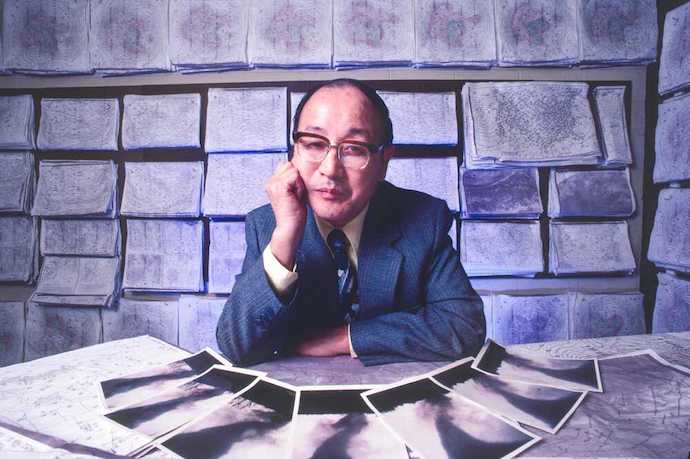Tetsuya “Ted” Fujita grew up in a Japanese fishing village in the 1920s and 1930s and evolved his interest in observing the sky and the earth into a career as a scientist and meteorologist, someone who studies the weather. Fujita’s specialty was mesometeorology, the study of mid-scale atmospheric phenomena like tornados and hurricanes.
What made Fujita special was his love of documenting the smallest of details and turning these details into hand-drawn maps and illustrations. From these illustrations, he made a number of discoveries that are still used today. Observing a thunderstorm on Seburi-yama Mountain in southern Japan, in August 1947, in a leaky shack, with 50-mile-per-hour winds outside, Fujita collected a lot of data that he then combined with data from other local weather stations to create detailed maps of air pressure and wind speed.
Rescued Research
When a fellow Japanese researcher saw Fujita’s maps of the August 1947 thunderstorm, it reminded him of an academic paper that he had pulled out of a trash can outside an American radar station in Japan. The academic paper was by Horace Byers, a University of Chicago professor. Byers had observed the same details Fujita had documented. So Fujita translated his own work into English and sent it to Byers. That led Byers to invite him to Chicago where Fujita spent the rest of his career studying tornados and extreme weather.
Oddly enough, Fujita had to wait 30 years before he saw his first tornado. Until then, his work involved flying over the damage done by tornadoes, taking photographs, and then drawing conclusions from his data. He was most interested in creating a way to measure tornados. His F-scale, (F for Fujita), is still used today in an enhanced or EF-scale. The F-scale uses wind speed and visible damage to identify a storm from F0 (winds of 40-72 miles per hour with light damage) to F5 (winds of 261 to 318 miles an hour and massive damage).
Mr. Tornado
In addition to measuring tornados, which earned Fujita the title of Mr. Tornado, he also made a number of other important discoveries that saved lives. His research led to the discovery of microbursts and downbursts, two abrupt weather patterns that can cause planes to crash mysteriously because the winds appear and disappear suddenly.
Fujita also discovered that most tornadoes are made up of a small family of tornadoes that move together. His research also revealed that storm damage happens in an unusual pattern: the center of the damage often is minor with severe damage outside of the center, and then light or no damage outside the damaged area. He first noticed this pattern in 1945 as part of a Japanese team studying damage from the atomic bombs dropped on Hiroshima and Nagasaki, only to see the pattern appear again with tornadoes and airplane crashes caused by microbursts and downbursts.
In addition to Fujita’s discoveries based on careful and meticulous documentation, he’s also loved and appreciated for his many drawings that were published and in his memoir. When he flew from Japan to Chicago in 1953, he drew diagrams describing the flight, his sleep, cloud patterns, and other details. These illustrations showed that Fujita’s scientific skills were matched by his artistic skills.
Learn More
The Remarkable Mind of Mr. Tornado
https://www.pbs.org/wgbh/americanexperience/features/mr-tornado-remarkable-mind/
Memoirs of Effort to Unlock the Mystery of Severe Storms during the 50 Years, 1942-1992
https://swco-ir.tdl.org/handle/10605/262046
Dr. Tetsuya Theodore Fujita “Mr. Tornado”
https://storymaps.arcgis.com/stories/ff8558433b5b49a3b15783f9d11d4bf1
How one scientist reshaped what we know about tornadoes
https://news.uchicago.edu/story/how-one-scientist-reshaped-what-we-know-about-tornadoes

